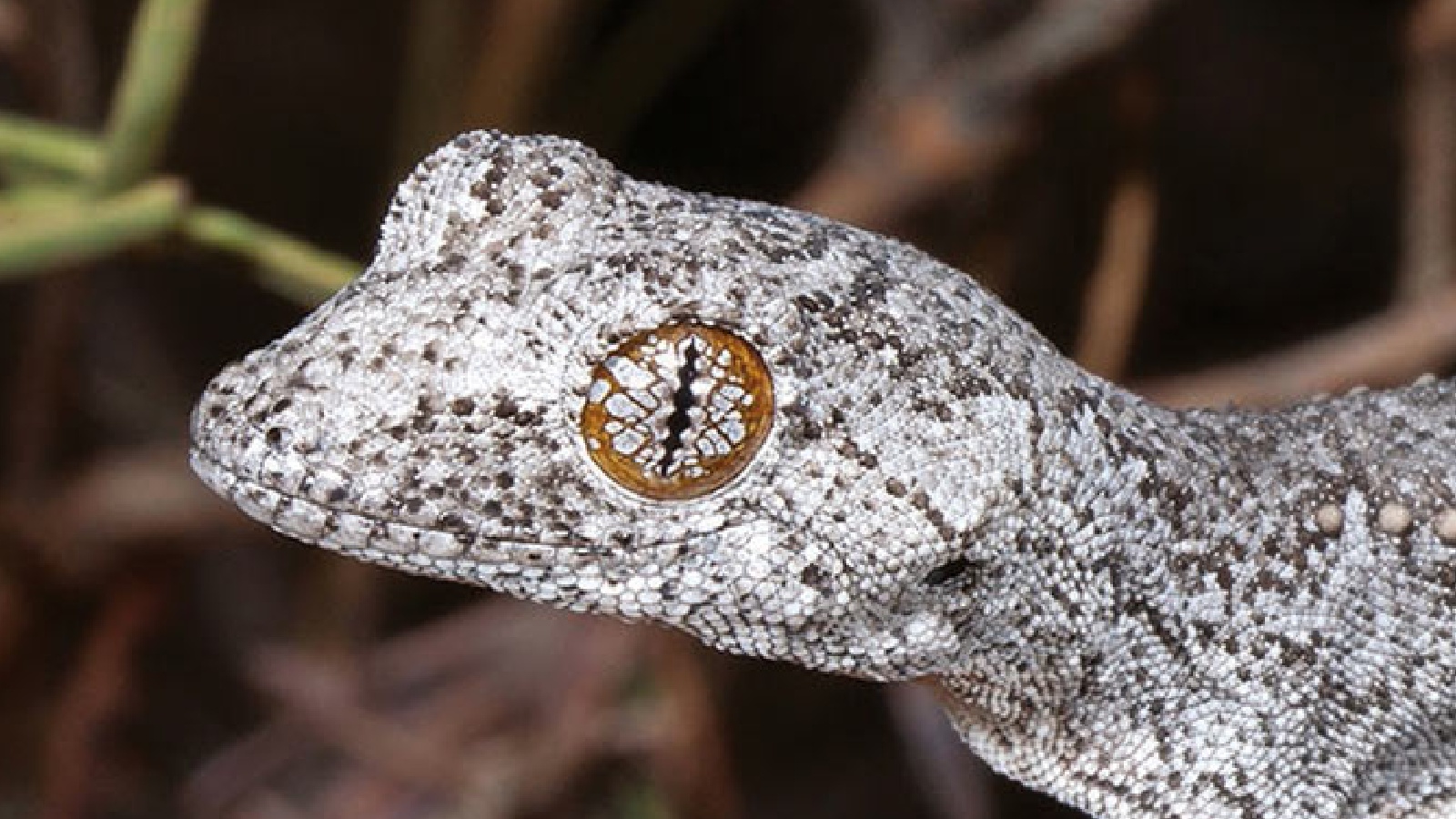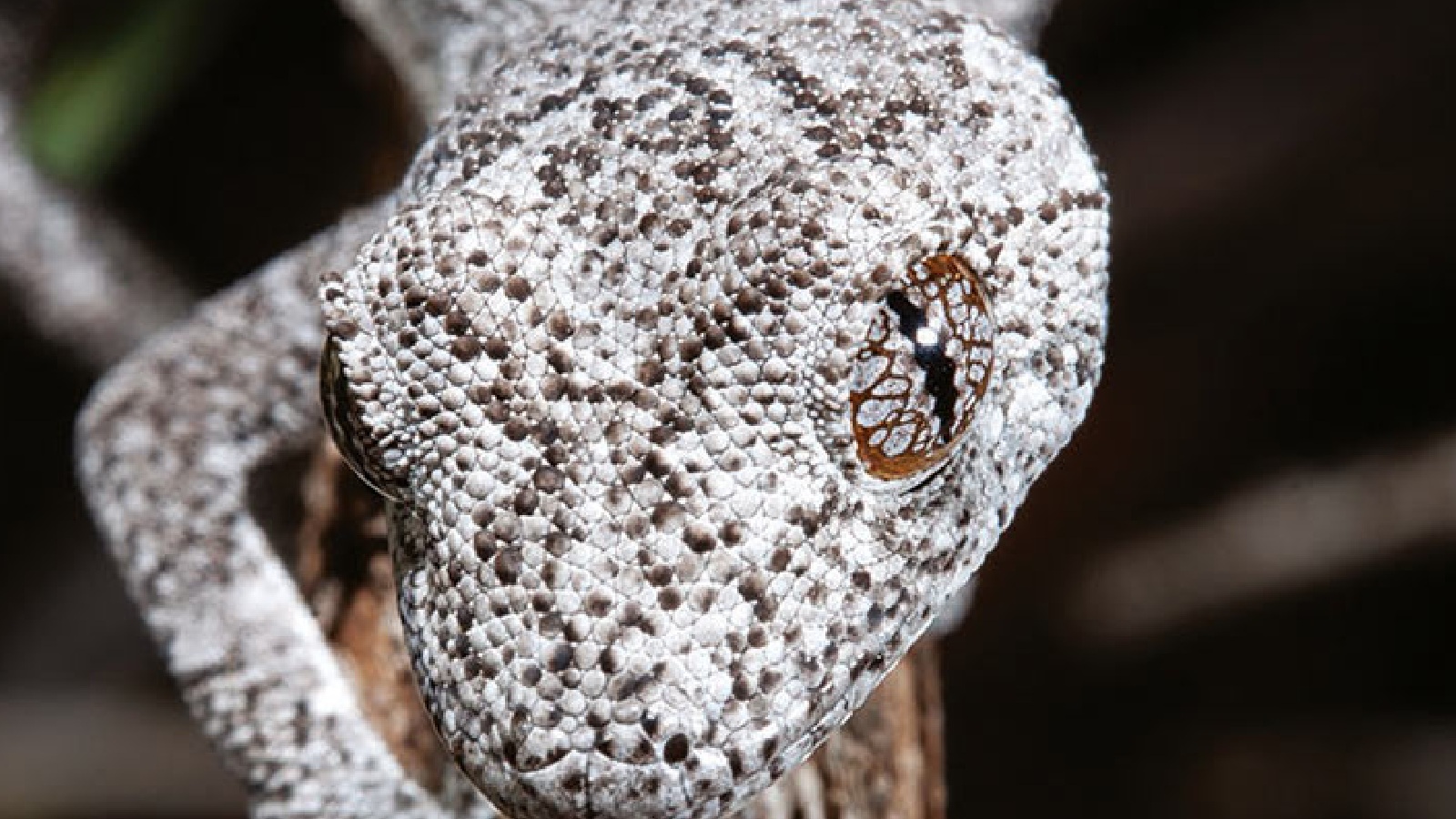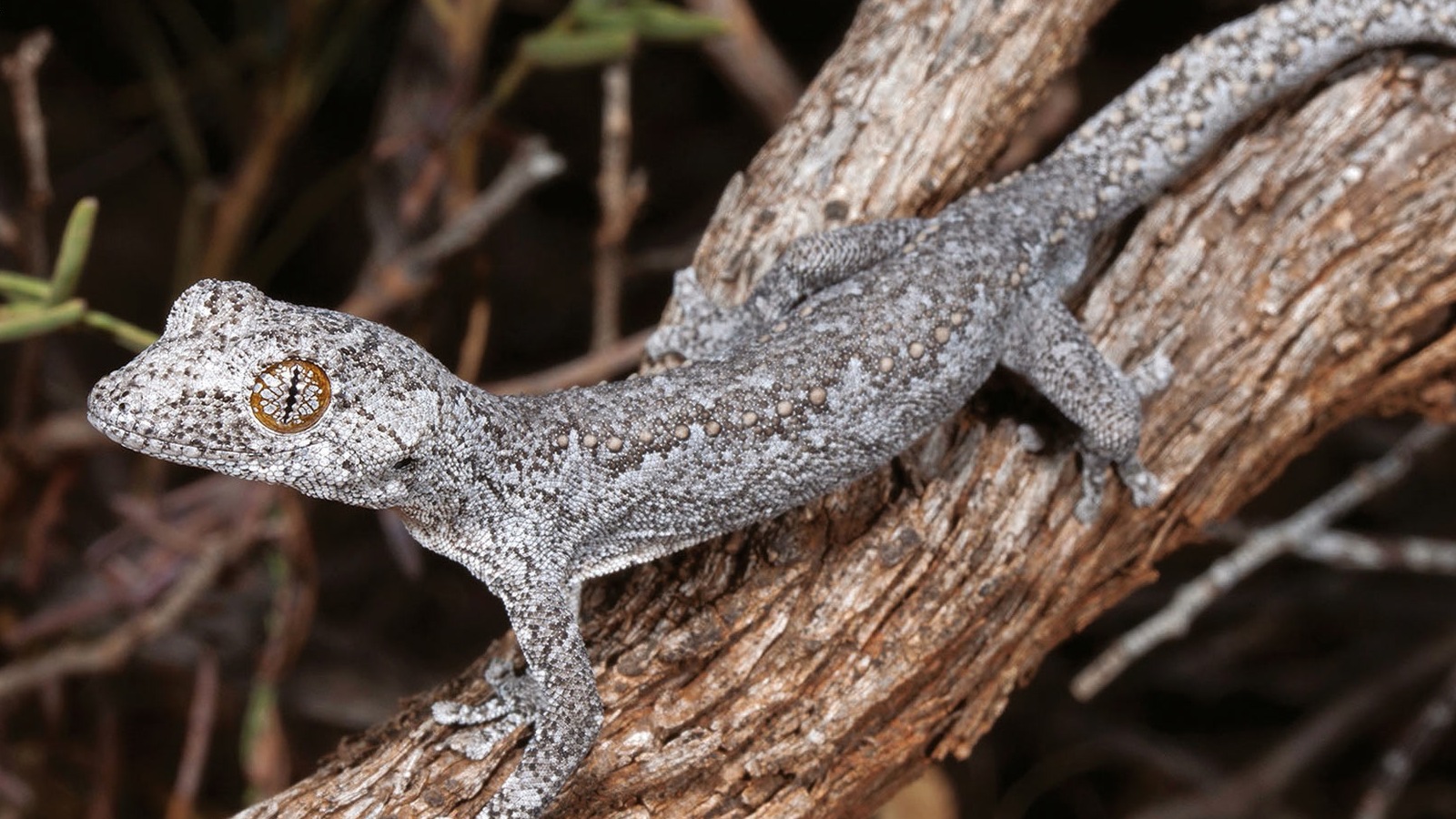
Researchers in Australia have discovered a new species of gecko with beautiful psychedelic eyes. The stunning lizards evaded detection for decades due to their similarities with a closely related species.
The new species, called the lesser thorn-tailed gecko (Strophurus spinula), is about 2.4 inches (6.1 centimeters) long and has a dappled pattern of white and gray scales, which is also mimicked in its eyes. The camouflaged geckos live in woodland areas across the south of Western Australia, though researchers are unsure exactly how large the newfound gecko’s population is.
S. spinula is the 21st species to be identified in the genus Strophurus, all of which are endemic to Australia. They are collectively known as spiny-tailed geckos because they have small spines on their tails and occasionally above their eyes.
S. spinula was thought to be part of the closely related species S. assimilis, also known as the Goldfields spiny-tailed gecko. But in the new study, published in the journal Records of the Western Australian Museum, researchers conducted a widescale genetic analysis of the genus and discovered the new species.
Related: Desert geckos glow neon green in the moonlight, scientists discover

A closer examination of S. spinula showed the newfound species can be physically distinguished from S. assimilis and other spiny-tailed geckos by its unusually straight and unevenly spaced spines along its body and enlarged spines on its tail, researchers wrote in the paper.
The genetic analysis also revealed that despite looking most similar to S. assimilis, the new species is actually more closely related to the eastern spiny-tailed gecko (S. intermedius), the soft spiny-tailed gecko (S. spinigerus) and the Exmouth spiny-tailed gecko (S. rankini), the researchers wrote.

Like all other spiny-tailed geckos, S. spinula can secrete a harmless and foul-smelling chemical from glands near its tail to deter potentially predatory birds from landing in overhead shrubbery, where they normally attack from.
S. spinula appears to prefer woodlands dominated by the mulga tree (Acacia aneura), which grows in extremely arid conditions. The researchers now want to find out why the new species prefers this habitat type.







